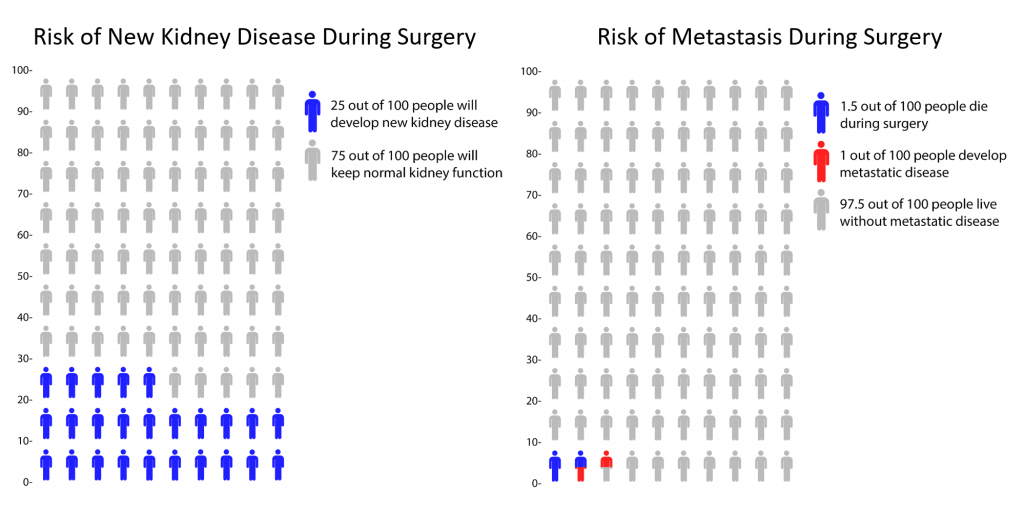Surgery
Surgery entails the removal of the kidney section containing the mass. It is often used for larger or faster-growing masses, and is the most invasive of the treatment options.
Surgery
Partial Nephrectomy or Nephrectomy
Your urologist may recommend a partial nephrectomy (removal of part of the kidney) or a complete nephrectomy, where the whole kidney is removed.
What does Partial Nephrectomy Mean?
Partial Nephrectomy is a type of surgery, which is the most invasive treatment option. In this surgery, the part of the kidney containing the tumor is cut out. It must be performed under general anesthesia (meaning a tube and machine are needed to help you breathe).
What Could Happen if I Undergo Partial Nephrectomy?
- The tumor is completely removed in 98 out of 100 patients. For 2 out of 100 patients, some tumor could remain after surgery and if it is cancer, the operation may need to be repeated to cut out the rest.
- If your mass is a cancer, there is a 5% chance that the tumor could come back in the kidney (recurrence).
- If your mass is a cancer, there is a 1% chance that the tumor could spread to other parts of the body (metastasize).
- 1 out of 100 patients may die during surgery. This chance will depend somewhat on your health before surgery.
After Partial Nephrectomy or Nephrectomy
- Most patients stay in the hospital 2-5 days after surgery, depending on the exact type of surgery.
- If there are any complications, you will need to stay longer and may need additional testing and procedures to repair the problem.
- After leaving the hospital, it will take several weeks at home to heal and recover.
What do I have to do after surgery?
- If the mass turns out to be cancer, you will need to return to have CT or MRI scans and make sure the tumor has not grown back. Imaging scans would be ordered every 6 months for 2 years, and then yearly afterwards.
- If the mass turns out to be benign, you will see the doctor in 6 months with one imaging scan and he or she will determine if you need more scans.

